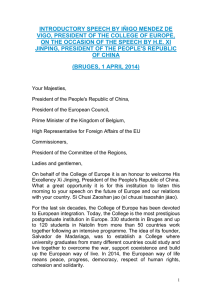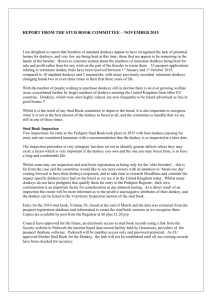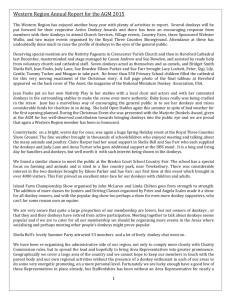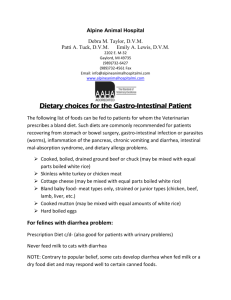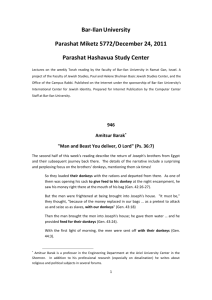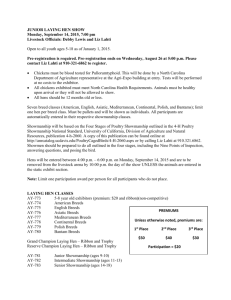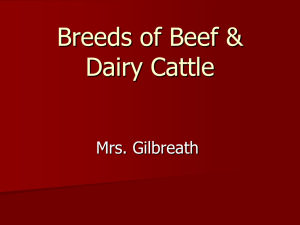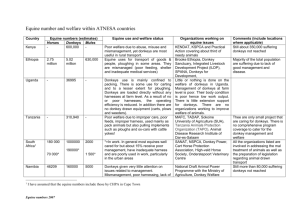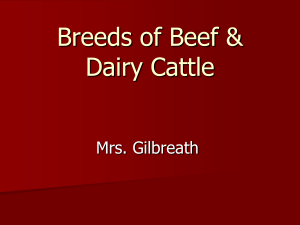Daniele Bigi (Italy) Chairman of RARE Association. RARE (Razze
advertisement
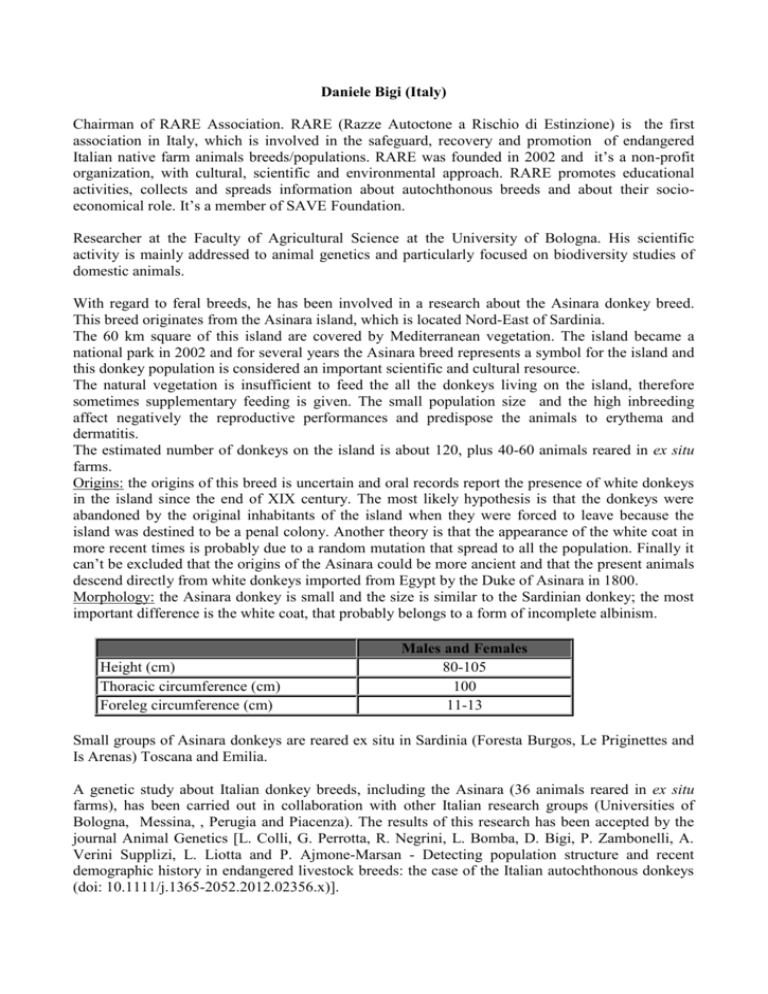
Daniele Bigi (Italy) Chairman of RARE Association. RARE (Razze Autoctone a Rischio di Estinzione) is the first association in Italy, which is involved in the safeguard, recovery and promotion of endangered Italian native farm animals breeds/populations. RARE was founded in 2002 and it’s a non-profit organization, with cultural, scientific and environmental approach. RARE promotes educational activities, collects and spreads information about autochthonous breeds and about their socioeconomical role. It’s a member of SAVE Foundation. Researcher at the Faculty of Agricultural Science at the University of Bologna. His scientific activity is mainly addressed to animal genetics and particularly focused on biodiversity studies of domestic animals. With regard to feral breeds, he has been involved in a research about the Asinara donkey breed. This breed originates from the Asinara island, which is located Nord-East of Sardinia. The 60 km square of this island are covered by Mediterranean vegetation. The island became a national park in 2002 and for several years the Asinara breed represents a symbol for the island and this donkey population is considered an important scientific and cultural resource. The natural vegetation is insufficient to feed the all the donkeys living on the island, therefore sometimes supplementary feeding is given. The small population size and the high inbreeding affect negatively the reproductive performances and predispose the animals to erythema and dermatitis. The estimated number of donkeys on the island is about 120, plus 40-60 animals reared in ex situ farms. Origins: the origins of this breed is uncertain and oral records report the presence of white donkeys in the island since the end of XIX century. The most likely hypothesis is that the donkeys were abandoned by the original inhabitants of the island when they were forced to leave because the island was destined to be a penal colony. Another theory is that the appearance of the white coat in more recent times is probably due to a random mutation that spread to all the population. Finally it can’t be excluded that the origins of the Asinara could be more ancient and that the present animals descend directly from white donkeys imported from Egypt by the Duke of Asinara in 1800. Morphology: the Asinara donkey is small and the size is similar to the Sardinian donkey; the most important difference is the white coat, that probably belongs to a form of incomplete albinism. Height (cm) Thoracic circumference (cm) Foreleg circumference (cm) Males and Females 80-105 100 11-13 Small groups of Asinara donkeys are reared ex situ in Sardinia (Foresta Burgos, Le Priginettes and Is Arenas) Toscana and Emilia. A genetic study about Italian donkey breeds, including the Asinara (36 animals reared in ex situ farms), has been carried out in collaboration with other Italian research groups (Universities of Bologna, Messina, , Perugia and Piacenza). The results of this research has been accepted by the journal Animal Genetics [L. Colli, G. Perrotta, R. Negrini, L. Bomba, D. Bigi, P. Zambonelli, A. Verini Supplizi, L. Liotta and P. Ajmone-Marsan - Detecting population structure and recent demographic history in endangered livestock breeds: the case of the Italian autochthonous donkeys (doi: 10.1111/j.1365-2052.2012.02356.x)]. Eight Italian donkey breeds were considered in the study: Asinara (ASI; n = 36), Sardo Grigio (SAG; n = 36), Amiatino (AMI; n = 48), Ragusano (RAG; n = 40), Grigio Siciliano (GRS; n = 30), Martina Franca (MAF; n = 31), Romagnolo (ROM; n = 27) and Pantesco (PAN; n = 30). To evaluate the extant genetic variability of Italian donkeys, we typed 16 microsatellite loci in 258 individuals from these breeds. Figure 1 – Geographic areas of origin of the eight Italian native donkeys breeds. Figure 2 – Asinara donkey – adult female. Results. FIS values were statistically significant for almost all breeds, excepted ROM and MAF, and ranged from 0.081 in AMI to 0.301 in SAG. A FIS value of 0.134 (P<0.001) detected in Asinara, indicates a significant level of inbreeding in this breed. Overall values of Wright F statistics were FIS = 0.127, FST = 0.109, FIT = 0.222 (P<0.001), thus indicating the existence of moderate levels of inbreeding in the total population and a significant partition of genetic variability between breeds. The Sardinian breeds, Asinara and Sardo Grigio, shared some distinctive genetic traits that separated them from the remaining Italian donkeys. Asinara and Sardo Grigio, in fact, were assigned to the same cluster by both the Neighbor-net (Figure 3) and the Bayesian assignment (Figure 4); in this latter case, in particular, they are included in the first partition revealed by Structure software and form a group that remains strongly supported. The FST value of 0.041 also supports the idea of a close similarity between ASI and SAG. This molecular evidence found further support in the remarkable similarity in size and morphological traits of these breeds. Figure 3 – Neighbor-net based on Reynolds distance matrix between breeds. Figure 4 – Bayesian clustering preformed with Structure software on donkey microsatellite data. From top to bottom: assignment of single individuals (thin vertical bars) to the different clusters.
